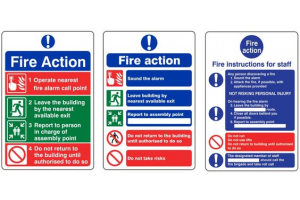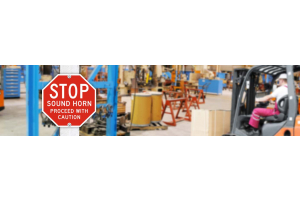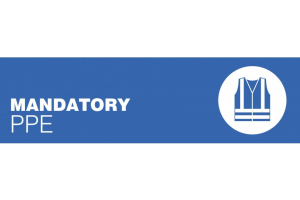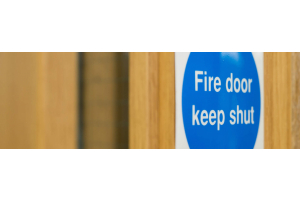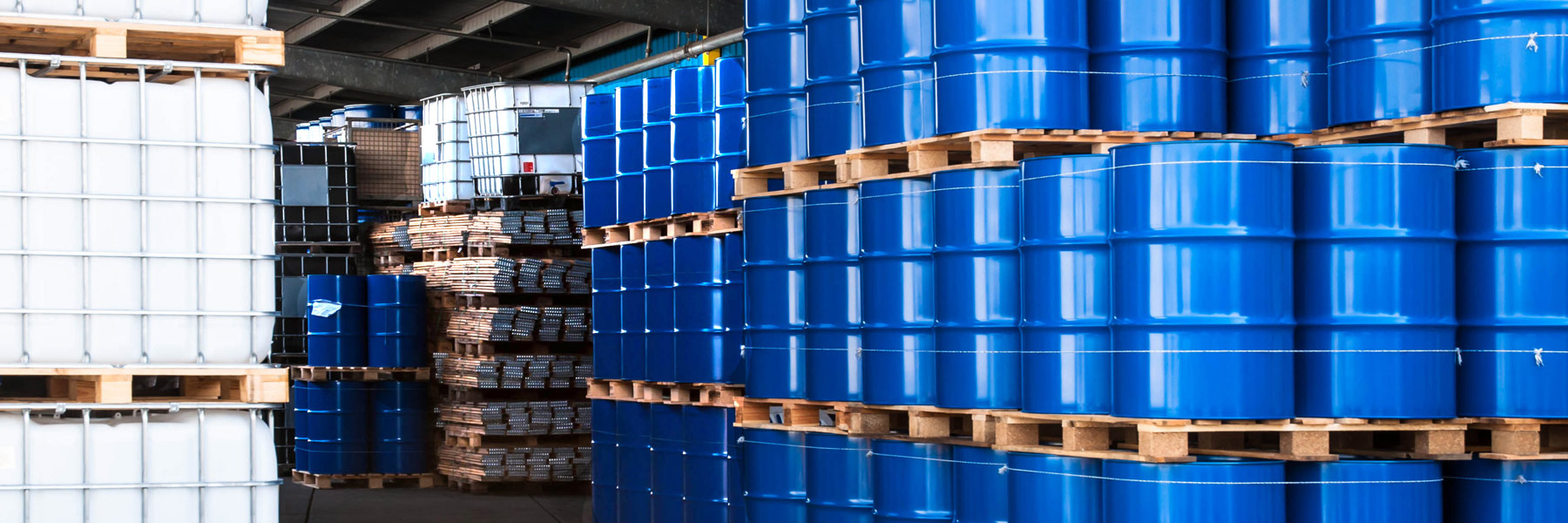
Chemical Warehousing
This fourth edition of Chemical warehousing is aimed at anyone who has responsibility for the storage of dangerous substances, regardless of the size of storage facility.
It sets out control measures aimed at eliminating or reducing risks to people & at work or otherwise & from the storage of packaged dangerous goods. It reflects good practice for the design of new storage facilities (and where reasonably practicable, to existing sites) and applies to transit or distribution warehouses, open-air storage compounds, and facilities associated with a chemical production site or end user.
The guidance has been updated in light of changes to legislation and new sections have been added, to reflect changes to industry practice and what chemicals warehouses store, covering: aerosols; intermediate bulk containers (IBCs); storage of hazardous wastes; information, instruction and training; audit and review; and process safety performance indicators.
If your chemical warehouse site falls under the requirements of the Control of Major Accident Hazards Regulations 1999 (as amended) (COMAH), you may need to provide supplementary measures to control the risks that are listed within this publication to achieve a level of risk that is as low as reasonably practicable (ALARP). For further guidance on the COMAH Regulations, refer to A guide to the Control of Major Accident Hazards Regulations 1999 (as amended) L111.Where warehouses are storing large inventories of dangerous substances, eg flammable liquids, it may be necessary to read this book in conjunction with other guidance such as The storage of flammable liquids in containers HSG51
The objectives of this publication are to:
- help you assess and reduce the risks associated with the storage of packaged and dangerous substances;
- increase awareness of the potential hazards associated with the storage of packaged dangerous substances;
- advise on safe management procedures and precautions to reduce injuries and damage caused by incidents involving the storage of packaged dangerous substances. Risks to health are also important but this document does not cover them in detail;
- give guidance on the appropriate standards for the design and construction of storage areas and buildings used for storing packaged dangerous substances at ambient temperature and pressure; and
- advise on the need for appropriate precautions, maintenance, training and good housekeeping where packaged dangerous substances are stored.
Legal requirements
There are two types of health and safety law: those that make specific requirements detailing what you should do to comply with them and those that make general requirements, such as the Health and Safety at Work etc Act 1974. HSE publishes guidance to help you to understand what you have to do to comply with health and safety law.
Chemicals (Hazard Information and Packaging for Supply) Regulations 2002 (as amended) (CHIP) These Regulations, commonly referred to as & CHIPS;, contain requirements for the supply of chemicals. They require suppliers of chemicals to:
- classify them according to their hazards;
- give information about the hazards to the people they supply, both in the form of labels and material safety data sheets (MSDSs); and
- package the chemicals safely.
-
Classifying chemicals according to CHIP requires knowledge of physical and chemical properties, and of the health and environmental effects. As a result of the 2008 CHIP Amendment Regulations, chemical suppliers may need to take account of any large quantities of newly reclassified chemicals they have stored on site at any one time to ensure that they comply with the Control of Major Accident Hazards Regulations 1999 (as amended). European Regulation on classification, labelling and packaging (CLP) The Globally Harmonised System of Classification and Labelling of Chemicals (GHS) is a United Nations system to identify hazardous chemicals and to inform users about these hazards through standard symbols and phrases on the packaging labels and through material safety data sheets. These new regulations align existing EU legislation to the GHS. The CLP regulations entered into force on 20 January 2009. They replace the current rules on classification, labelling and packaging of substances (Directive 67/548/EEC) and preparations (Directive 1999/45/EC) after a transitional period. The deadline for substance classification according to the new rules will be 1 December 2010 and for mixtures 1 June 2015.
Control of Pesticides Regulations 1986 (as amended) These Regulations, made under the Food and Environmental Protection Act 1985, require pesticides to be approved before they may be sold, supplied, used, advertised or stored. In addition, sites storing more than 200 kg, 200 litres or a similar mixed quantity of a pesticide approved for agricultural use should be under the control of a person holding a recognised certificate of competence. Control of Major Accident Hazards Regulations 1999 (as amended) (COMAH) The COMAH Regulations implement Council Directive 96/82/EC, known as the Seveso II Directive, as amended by Directive 2003/105/EC (Control of Major Accident Hazards (Amendment) Regulations 2005) and replaced the Control of Industrial Major Accident Hazards Regulations 1984 (CIMAH). The aim of these Regulations is to prevent major accidents involving dangerous substances and limit the consequences to people and the environment of any which do occur. The COMAH Regulations require dutyholders to introduce controls on establishments where dangerous substances are present above certain quantities. These controls may be to a much higher standard than is normally considered adequate or good practice. The requirements placed upon the duty holder vary depending on the inventory of dangerous substances on site (known as top tier and lower tier. The requirements are significantly increased for top-tier sites. These Regulations apply to establishments rather than individual activities. The COMAH Regulations are jointly enforced by HSE and the environment agencies acting as the Competent Authority.
Control of Substances Hazardous to Health Regulations 2002 (as amended) (COSHH) COSHH requires that employers control exposure to hazardous substances to prevent ill health. Employers should protect employees and others who may be exposed to these substances in the form in which they occur in the work activity. Substances are classified as hazardous under CHIP.
Hazard identification and risk assessment
A number of hazards may be created when storing packaged dangerous substances. These hazards may affect people working within the storage site, the emergency services in the event of an incident, the general public off site and the environment. In a warehouse, fire is generally considered to be the greatest hazard. This is because many people can be exposed to dangers such as radiated heat, missiles, harmful smoke and fumes. There will also be other hazards within your storage area that you should consider. In rare cases, certain stored substances can undergo violent decomposition when engulfed in flame, and an explosion can result. Common causes of incidents are:
- lack of awareness of the properties of the dangerous substances;
- operator error, due to lack of training and other human factors;
- inappropriate storage conditions with respect to the hazards of the substances;
- inadequate design, installation or maintenance of buildings and equipment;
- exposure to heat from a nearby fire or other heat source;
- poor control of ignition sources, including smoking and smoking materials, hot work, electrical equipment etc; and
- horseplay, vandalism and arson.
Hazard classification, Packaged dangerous goods have their own well-defined hazards, often detailed on the material safety data sheet (MSDS), and a specified safe method of storage. Section 15 of the MSDS summarises all relevant hazardous information about a product in terms of the CHIP labelling requirements. However, certain types of packaged dangerous substances may give rise to additional hazards within a warehouse. These different types of dangerous substances should therefore be assessed when considering a risk control strategy to ensure there is sufficient segregation etc. Interaction between different dangerous substances may create additional hazards. Dangerous substances should be received into a chemical warehouse by a competent person wearing chemical-resistant ppe who understands all the risks that they pose and can decide on where to store them and how to segregate them, having regard to their physical and chemical properties, the quantities concerned and the sizes of the packages. Most dangerous substances arriving on site will be marked with the carriage labelling or marking system laid out in the Carriage Regulations. These Regulations refer to the system set out within the ADR15 regulatory regime. This is based on a global classification system, is widely understood in industry and is simple to operate. Most chemical warehouses use this system to classify dangerous substances, although it does not meet the requirements of DSEAR. However, many dangerous goods, such as aerosols, are transported in limited quantity packages and will not be marked with the carriage labelling system, but with the limited quantity mark. This will normally consist of the United Nations (UN) number, or numbers, (identifying the type of dangerous goods) within a framed diamond and preceded by the letters UN. This is shown in black on a white background. Where multiple numbers are required these may optionally be replaced by the letters LQ.
There is also a second hazard classification system in operation, known as CHIP, that is based on information for supply of the dangerous substance. The classification tests are comparable to those for carriage, but are not the same as they serve a different purpose. A substance may have different hazard indicators for carriage and supply. In these cases the competent person should consider both hazard classification categories. In general, if a substance is within its outer packaging and this has a carriage label then the carriage system should be used. If the substance is removed from the outer packaging then the CHIP labelling should be used. The introduction of the classification, labelling and packaging regulations should make any differences between the two systems obsolete. COMAH and COSHH use the CHIP hazard classification system. This system does not necessarily meet the more specific requirements of DSEAR.
The CHIP system generally uses black on orange & yellow danger symbols, with associated signal words, If goods are in transit, between activities on site, or intended for dispatch at a later time, the competent person should collect relevant information from within the company to determine the hazard classification to allow a storage location to be identified. The hazard classification categories, Note that Class 1 (explosives), Class 6.2 (infectious substances) and Class 7 (radioactive substances) are not considered in this Article.In addition to the labelling required under the various regulations (the Carriage Regulations, CHIP and DSEAR), cylinders are often colour-coded to provide indication of their contents. European standard BS EN 1089-3:200416 relates to the colour-coding of transportable gas cylinders. Minor leaks from cylinders of compressed gases may disperse more readily if the cylinders are stored in the open air. Cylinders of liquefied gases should be stored in an upright position so that any leaks from valves etc will be of vapour or gas rather than liquid. Cylinders must be kept in an upright position should be secured to prevent toppling. Most types of cylinder will explode if exposed to intense heat, causing a risk of impact to people in the vicinity even if the cylinder contents are non-hazardous. Acetylene cylinders in particular are liable to explode without warning during or for some time after exposure to heat, because of the self-decomposition of the product. They may also explode if dropped or struck forcibly. Where flammable, toxic or asphyxiant gas cylinders are stored in buildings, good ventilation is essential to ensure that minor leaks will disperse safely. When considering storage locations and determining ventilation design criteria, your assessment will need to consider whether the gases concerned are heavier or lighter than air.
Under the Carriage Regulations, liquids are classified as flammable if they have a flashpoint below 60C. However, diesel, gas oil and heating oil (light) (UN 1202) are classified as flammable up to a flashpoint of 100C. This definition of flammable liquid includes all liquids classified as flammable, highly flammable and extremely flammable for supply according to CHIP. 59 Flammable liquid fires can grow rapidly once the integrity of the container is breached and the fire will spread quickly when escaping liquid flows from the stored material, keep foam fire extinguishers nearby. If the fire comes into contact with other flammable or oxidising materials, it will significantly increase in size and it will be more difficult to bring under control. Sealed containers may explode if exposed to intense heat. Depending on ground conditions at the time, liquids may travel some distance while a leak remains undetected Precautions to be taken include storing flammable liquids in a cool, dry place away from sources of ignition and heat, and in securely closed containers specifically designed for the purpose. It is preferable for the store to be in the open air, but in all cases adequate ventilation at high and low level will be needed to disperse any vapours from leaking containers. You should also consider means of controlling spillage. The storage of flammable liquids in containers HSG51.Class 4, This class contains materials with a variety of hazards and physical properties. Some are low melting point solids, or solids which are kept under a protective layer of inert liquid or gas. The types of substance included under the three recognised divisions of the class. You should obtain advice on each particular type of substance from the supplier. This needs to include information about any special conditions required for safe storage, eg temperature limitations, or sensitivity to impact, friction, impurities or water.
Labelling for Class 4.1
These are readily combustible solids that can be ignited by brief contact with a source of ignition, or are sensitive to friction, and that will continue to burn after removal of the source of ignition. Examples are matches, firelighters, nitrocellulose and sulphur. Self-reactive substances are included in this division. These may decompose with the evolution of heat and fumes at moderate temperatures. Examples include various azo compounds such as AZDN. Also included in this division are desensitised explosives. These contain sufficient water, solvent or plasticiser to suppress their explosive properties. Care should be taken to ensure that water or solvent-wetted explosives are not able to dry out through inappropriate storage conditions. Examples of desensitised explosives include picric acid and urea nitrate.
Class 4.2: Self-reactive and related substances
Pyrophoric (spontaneously combustible) substances have packaging that is designed to exclude air. If air enters a damaged package the substance may start to burn at room temperature or when gently heated. Examples include yellow phosphorus and some metal alkyls. Oxidative self-heating substances may react with the air, raising the temperature to the point at which spontaneous combustion takes place. This is normally a slow process, which can be controlled by restricting the pack size, limiting storage duration, monitoring temperatures or excluding air. Examples include some types of carbon dust and oily natural products.
Class 4.3: Substances dangerous when wet
These substances react with water and evolve flammable gases. Fire involving or in the vicinity of such materials should obviously not be tackled with water but powder fire extinguishers will help. Examples include calcium carbide, metal hydrides, powders of reactive metals such as magnesium or aluminium, and the alkali metals such as sodium.
Oxidising substances and organic peroxides
These are substances which, although they may not in themselves be combustible, can help other materials to burn rapidly even if air is excluded. When heated in a fire, many of these substances decompose and give off oxygen, which can increase the rate of burning with possible catastrophic consequences. It should be noted that organic peroxides do burn, often explosively. There have been a small number of incidents where relatively large packaged quantities of these materials, such as ammonium nitrate and sodium chlorate, have been involved in violent explosions when engulfed in fire. Guidance on the maximum stack size for ammonium nitrate is provided in Storing and handling ammonium nitrate and for sodium chlorate in Storage and use of sodium chlorate and other similar strong oxidants CS3. Most substances classified as oxidising are extremely reactive. They may be solids or liquids. They need to be stored away from flammable materials, so preventing any contamination or any possibility of them becoming involved in a fire. They may be stored with other similar strong oxidising agents, provided they are compatible. Organic peroxides are a particularly reactive type of oxidising substance. They may be solids, liquids or pastes, and have one or more of the following properties:
- liable to explosive decomposition;
- burn rapidly and intensely even in the absence of oxygen;
- sensitive to impact or friction;
- react dangerously with other substances;
- decompose at comparatively low temperatures; and/or
- cause spontaneous ignition if spilt onto combustible material.
Some organic peroxides may need to be marked with a subsidiary explosion risk label. Organic peroxides need to be stored separately from flammable, corrosive and toxic materials. Advice is given in The storage and handling of organic peroxides CS21. Specific advice and information on particular organic peroxides can be obtained from the material safety data sheets or the supplier.
Toxic substances
The main risk from toxic substances during storage is failure of containment. Appropriate pre-planning can minimise the consequences of isolated punctured drums or burst packages. However, in the event of fire, such protection is likely to be compromised by the failure of many containers due to the effects of flame and heat. As well as posing an immediate threat to anybody in the vicinity, eg firefighters, the toxic substance can also be spread large distances in the plume of smoke or it may be washed into watercourses by firefighting operations. The precautions necessary to control these risks depend on the quantities of toxic substances involved, their degree of toxicity and their persistence in the environment. Toxic substances vary widely in the hazards they create. During storage, the main hazard is from acute exposure due to loss of containment, rather than from the chronic effects that arise from low-level long-term exposure. Any labelling under the Carriage Regulations will give basic advice on the primary hazards and precautions, but material safety data sheets will need to be consulted for more detailed information.
Corrosive substances
Dangerous substances may be classified as corrosive because they burn the skin or otherwise harm anyone coming into contact with them. Many corrosive substances will also react with incompatible or unsuitable packaging or metals, eg storage racking or process plant. Leaking corrosive substances may damage the packaging of other dangerous substances, creating further leaks. Do not assume that different corrosive substances can be safely stored together. In many cases they can react with one another and may give rise to greater hazards than the individual substances. Read the available safety data to determine which substances can be stored together.
